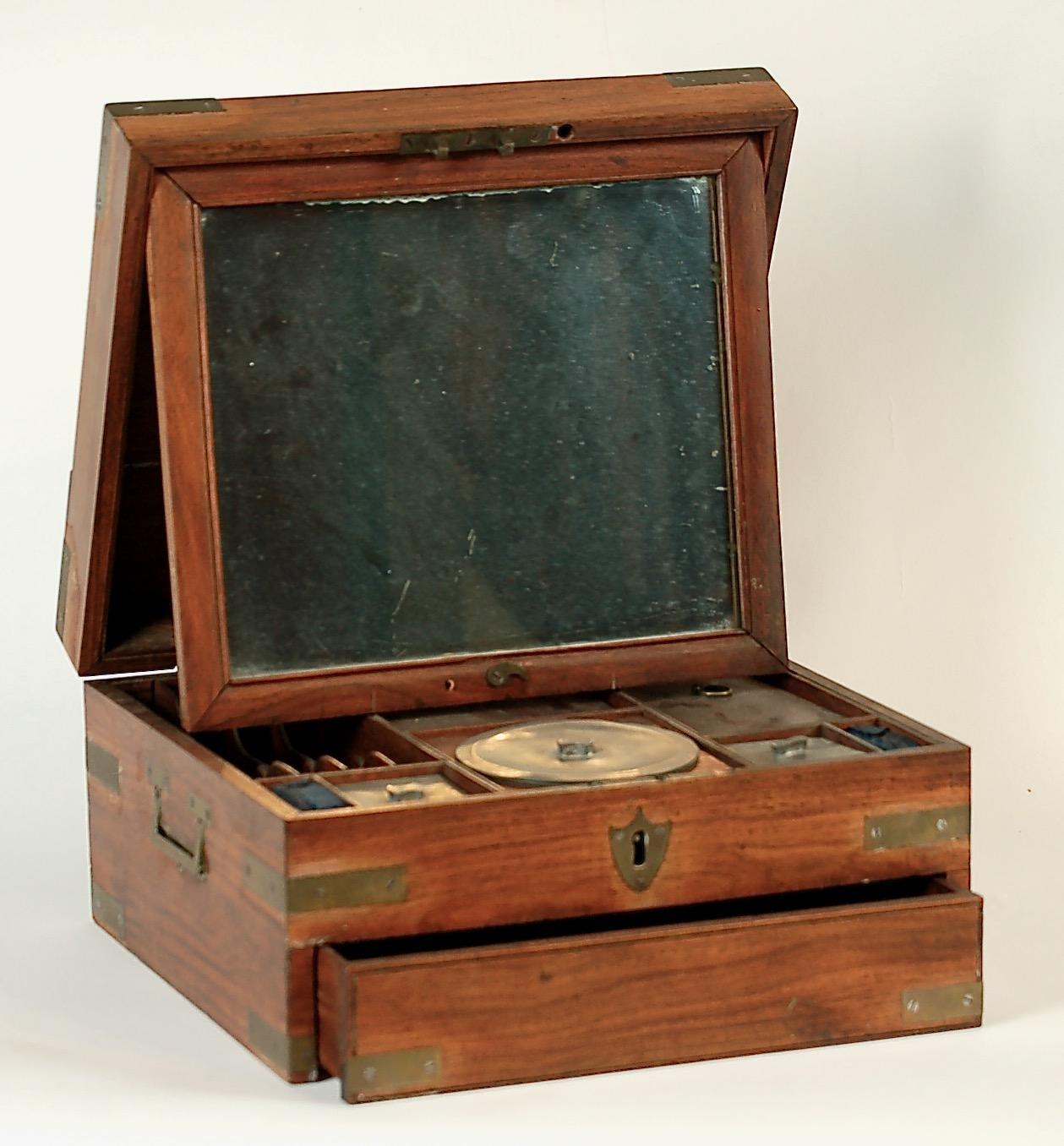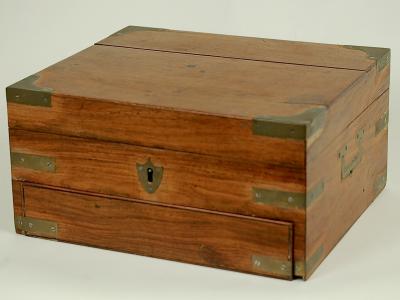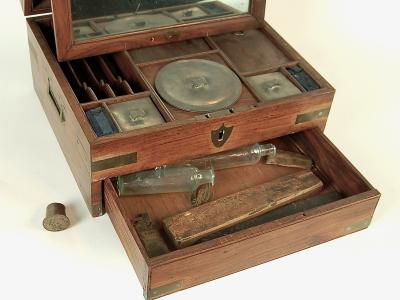Shaving box
England, possibly Sheffield
1820-1830
Measurements
5-1/2 in x 11 in x 9-1/2 in
Materials
Mahogany, brass, pewter, steel, stone, glass, horn, leather, and other materials
Credit Line
Historic Odessa Foundation, The David Wilson Mansion, Inc.
Accession Number
1971.633
Inscription
"RHODES & CO" is stamped on the razor blade; “DW” is engraved on a metal cap.
Provenance
Ex coll. Mrs. E. Tatnall (Mary Corbit) Warner. Possibly owned originally by David Wilson Jr.
Comments
The rectangular shaving box is neatly made with mitered corners reinforced by angled brass straps and having recessed lifting handles on each side. It has a hinged lid that encloses a framed looking glass within, hinged to the lid so that it can be adjusted to a convenient angle for use. A fitted interior in the upper half of the box now houses lidded metal boxes. Other items, such as a comb, sharpening stone, shaving brush, and glass vials, accompany the box. The lower half of the box is a single full-width drawer that can lock by means of a metal rod that depresses when the locking lid is closed.
Among the objects in the box is a razor marked by Rhodes & Co. Ebenezer Rhodes (1762-1839) was an author and accomplished cutlery makers. In 1824, “E. Rhodes, cutler, Sheffield,” published the second edition of Essay on the Manufacture, Choice, and Management of a Razor. His cutlery company, called Ebenezer Rhodes & Co., was listed in an 1825 Sheffield city directory. Rhodes declared bankruptcy in 1829, and the company was dissolved. This individual is surely the maker of the razor. Whether he gathered the various items from other makers and sold the assembled shaving boxes is unknown.
Another object of interest is an oval cap with the elaborate script initials “DW”. Previously, it had been catalogued as a wax stamp and used to suggest ownership of the shaving box by David Wilson. The cap is too lightly constructed, and if it were used to stamp wax, the resulting impression would be reversed. The object for which the cap was made appears to be missing. Given the long history of ownership by and association with the David Wilson Mansion, ownership by David Jr. is a reasonable possibility.


